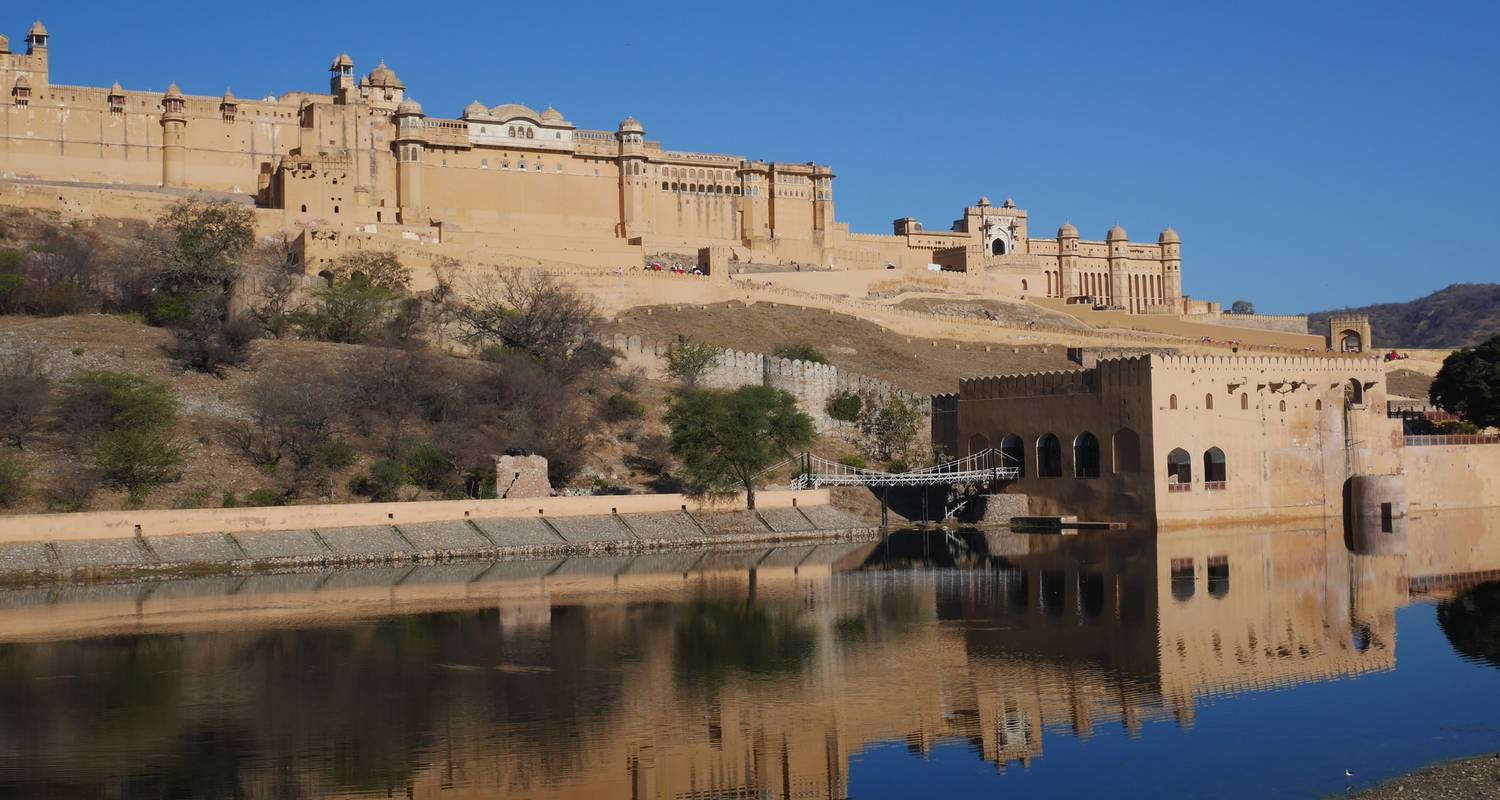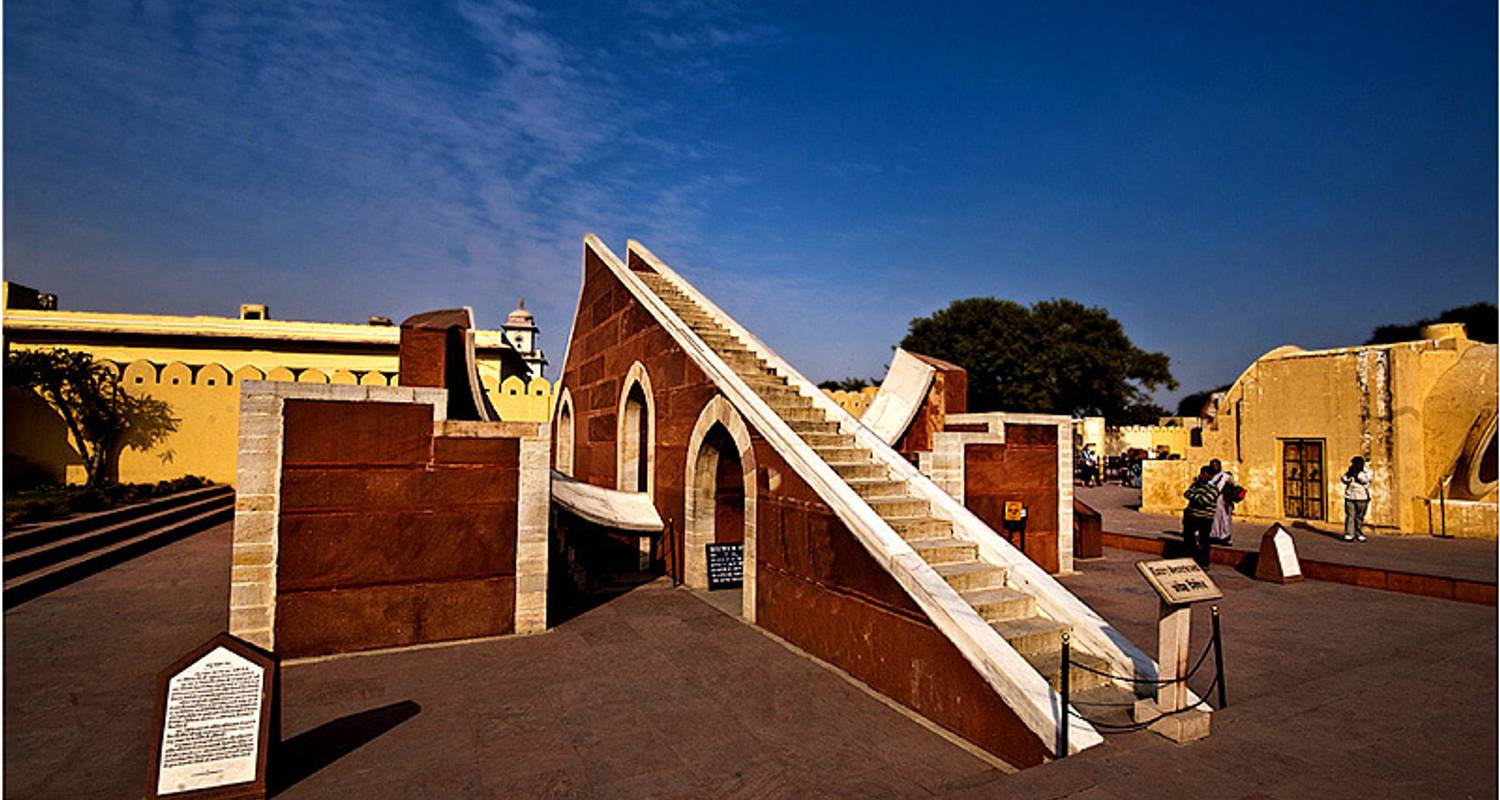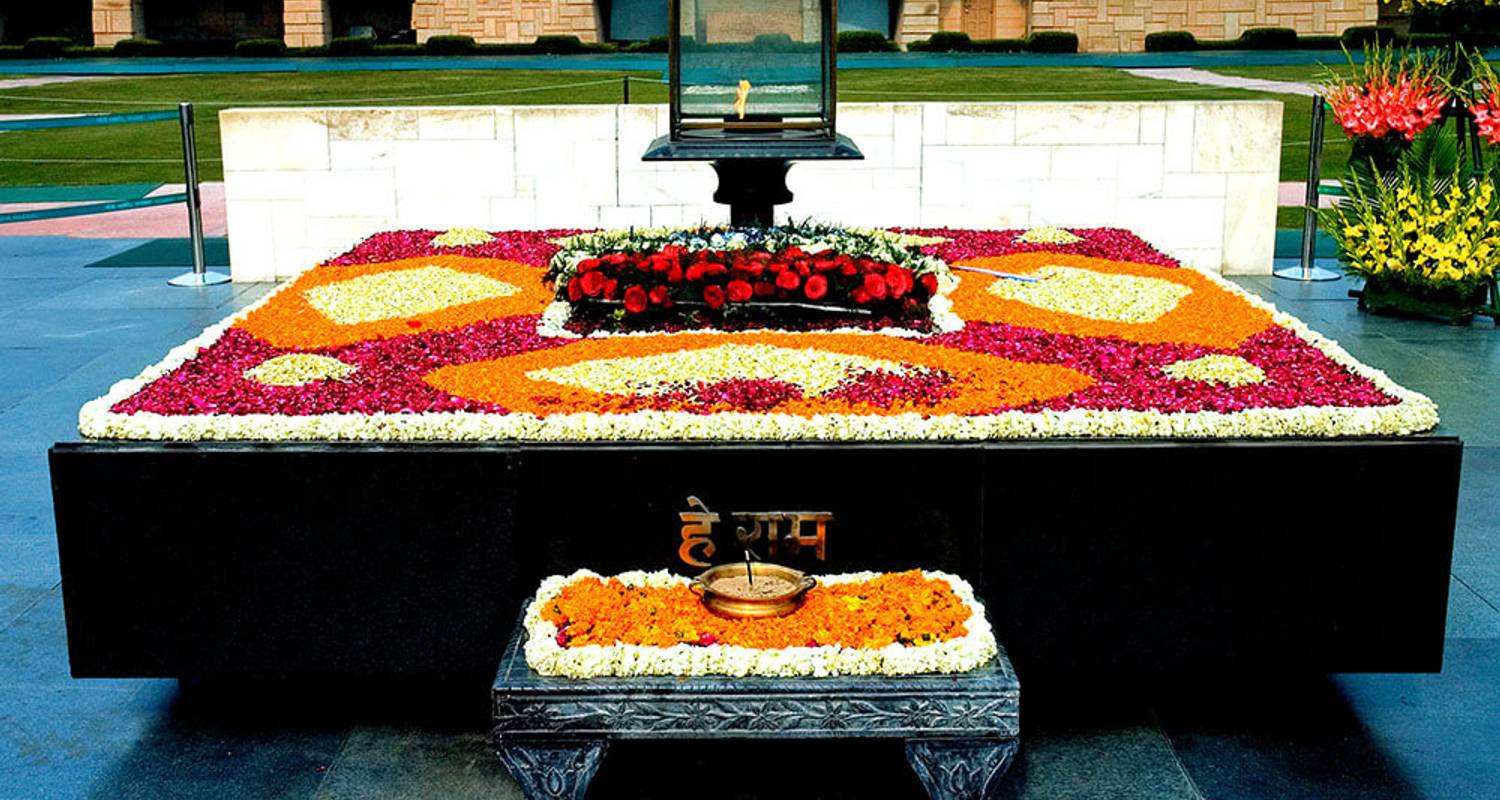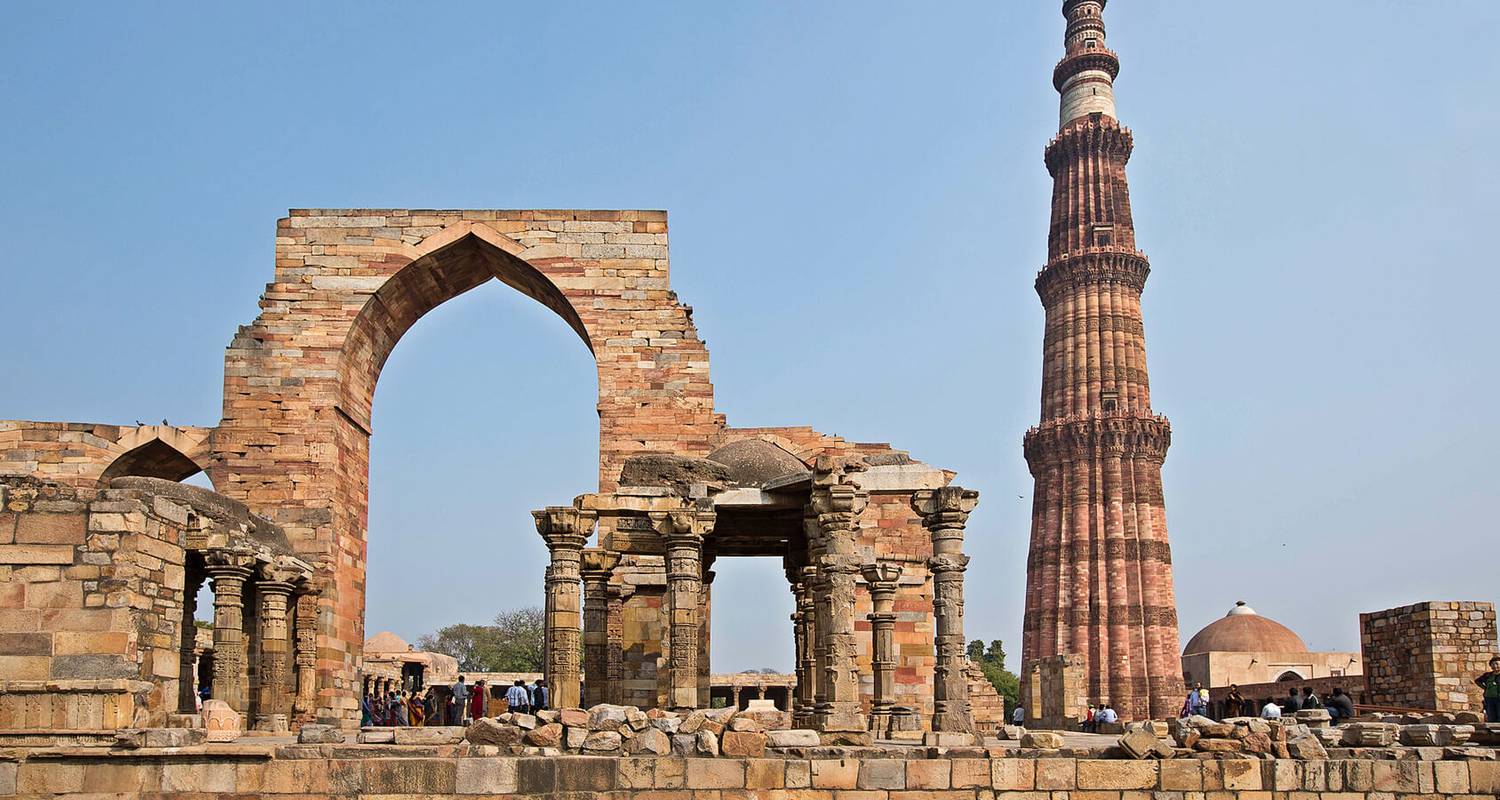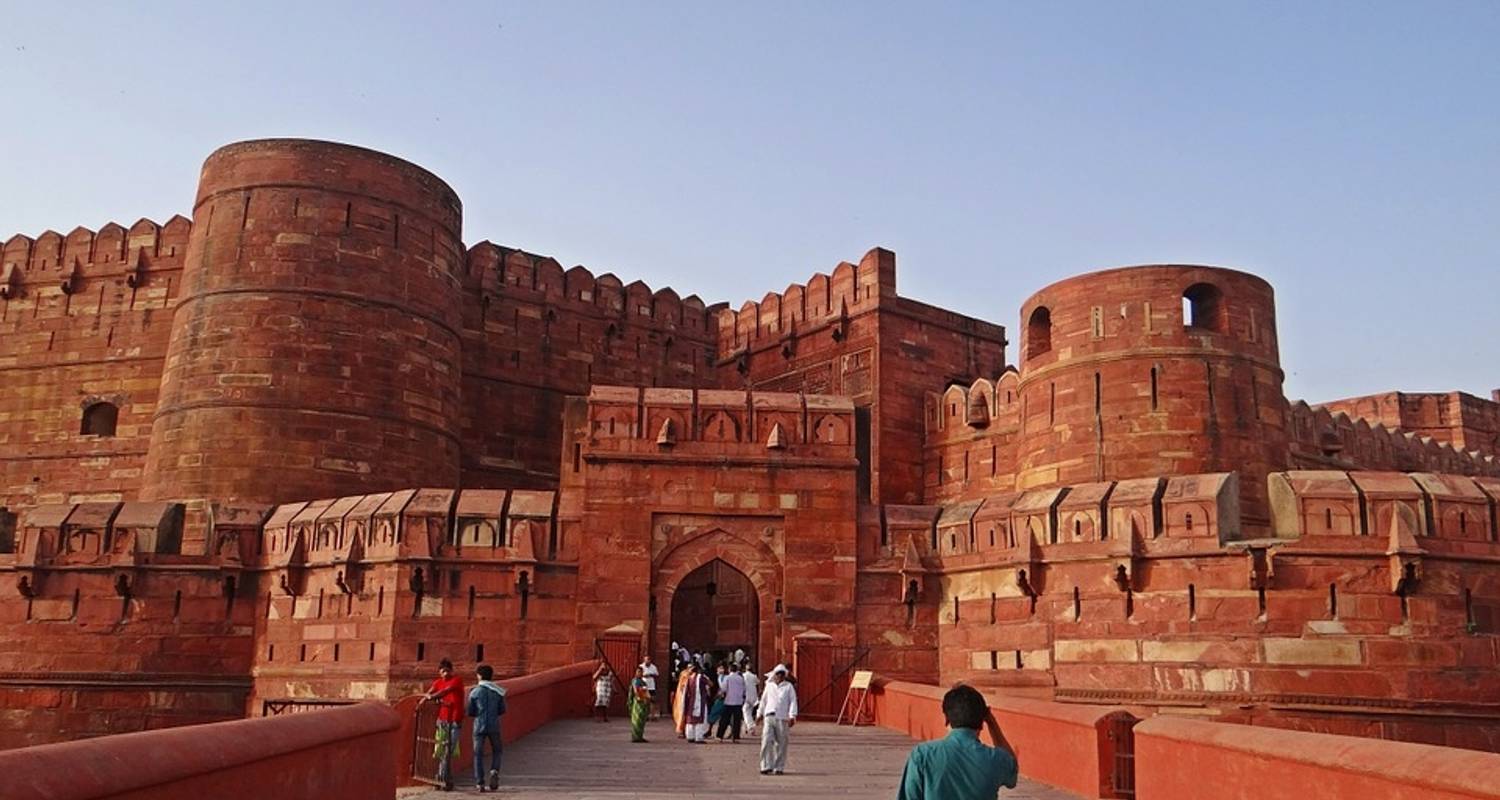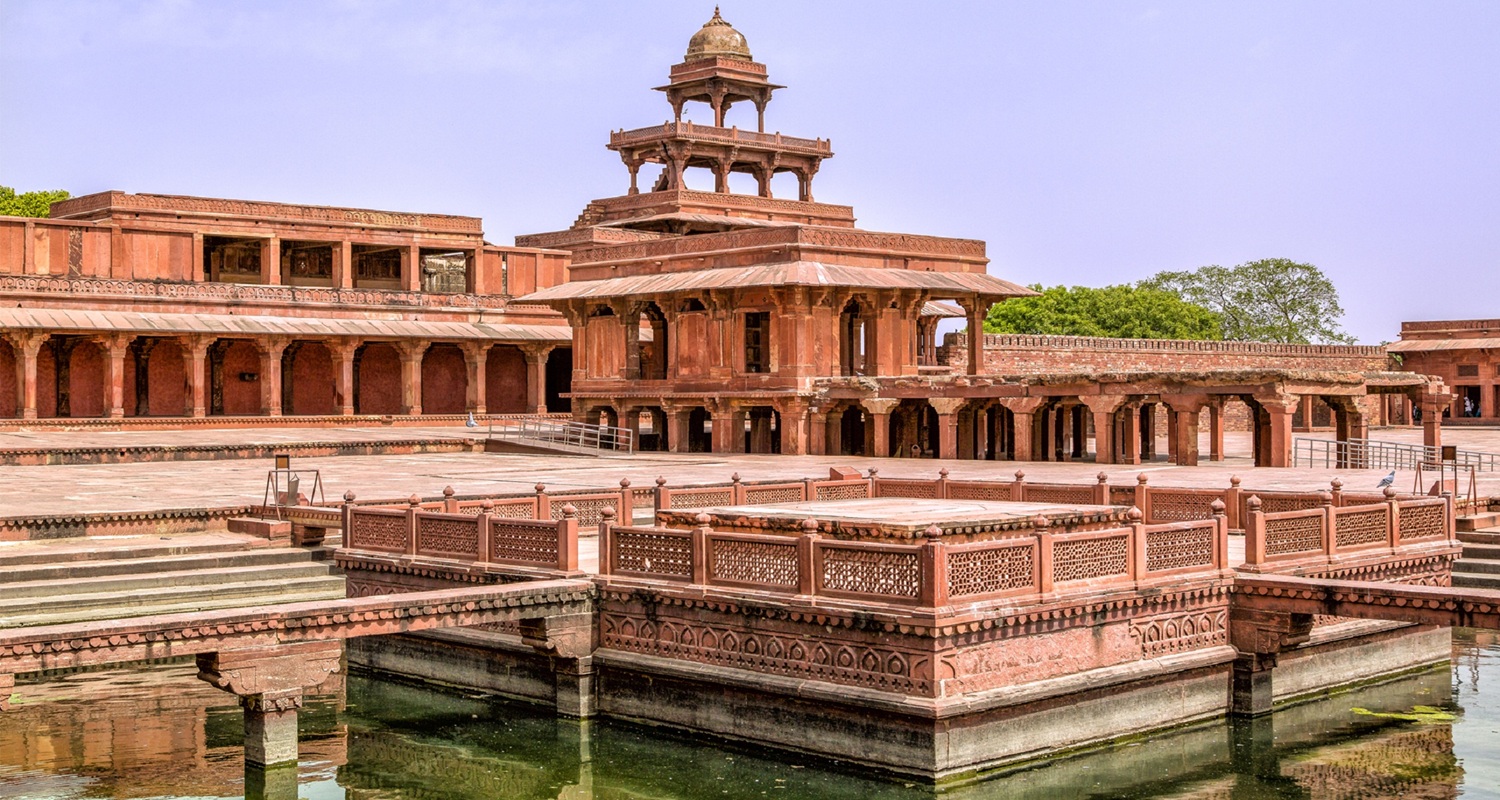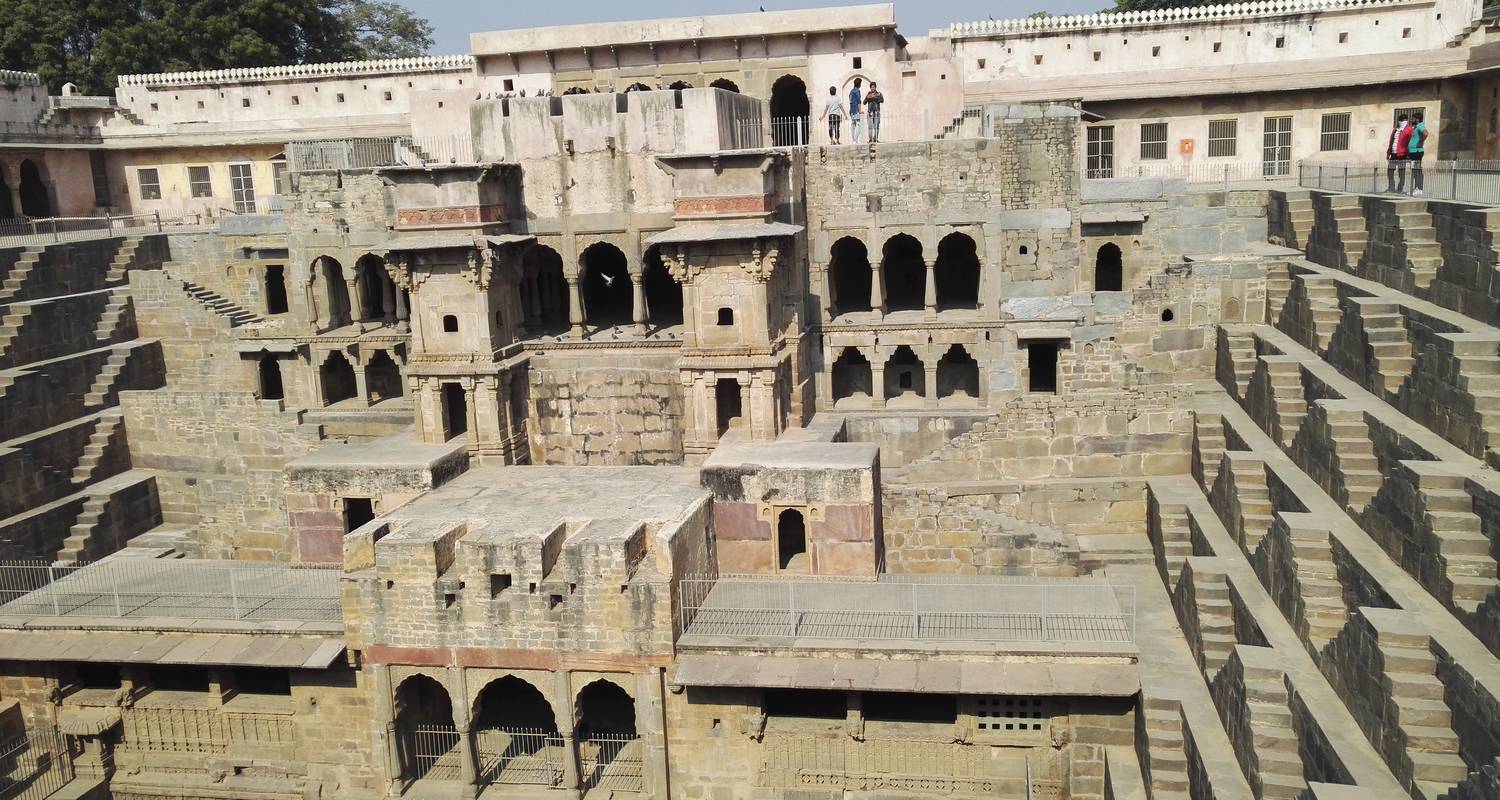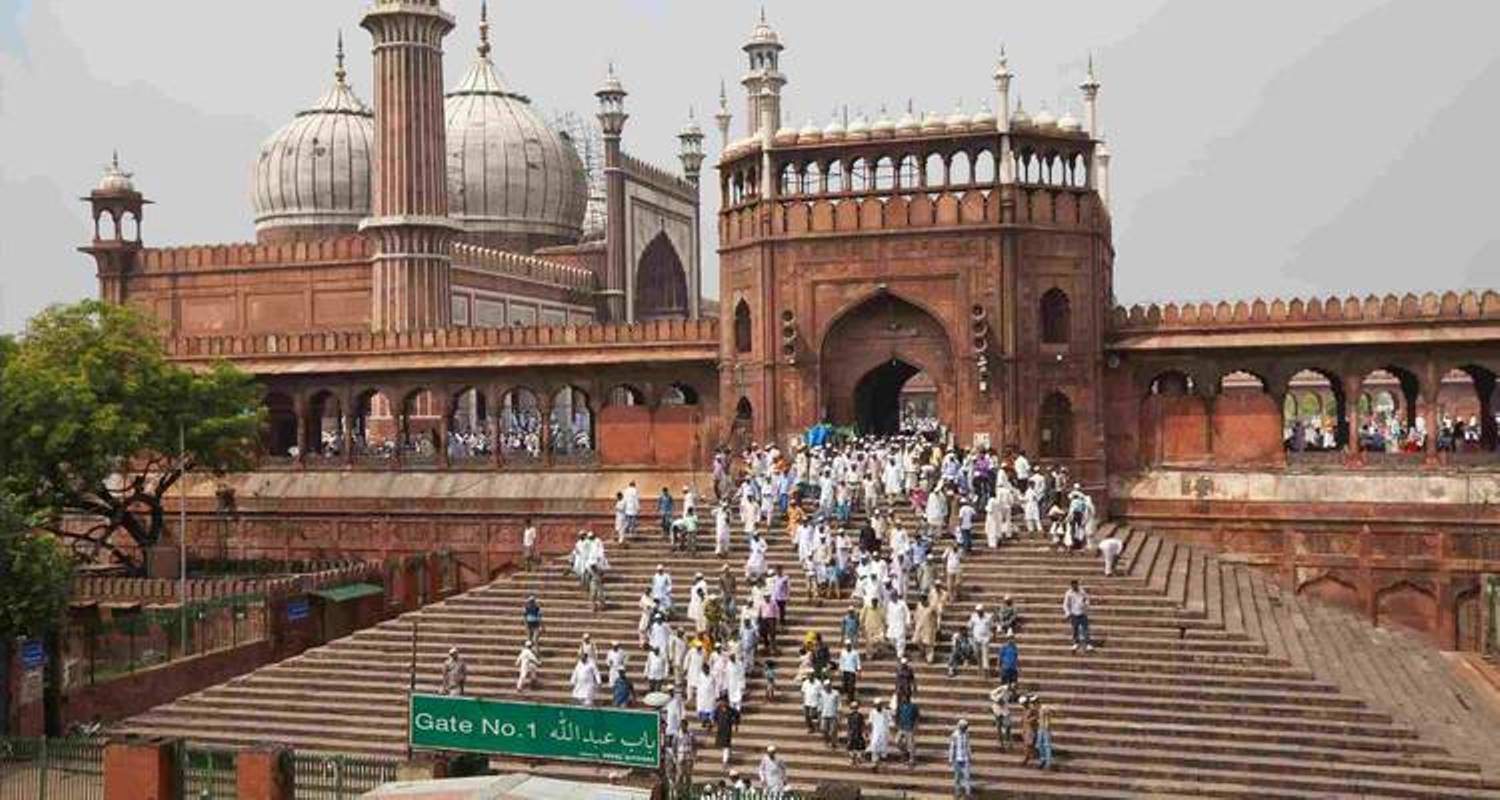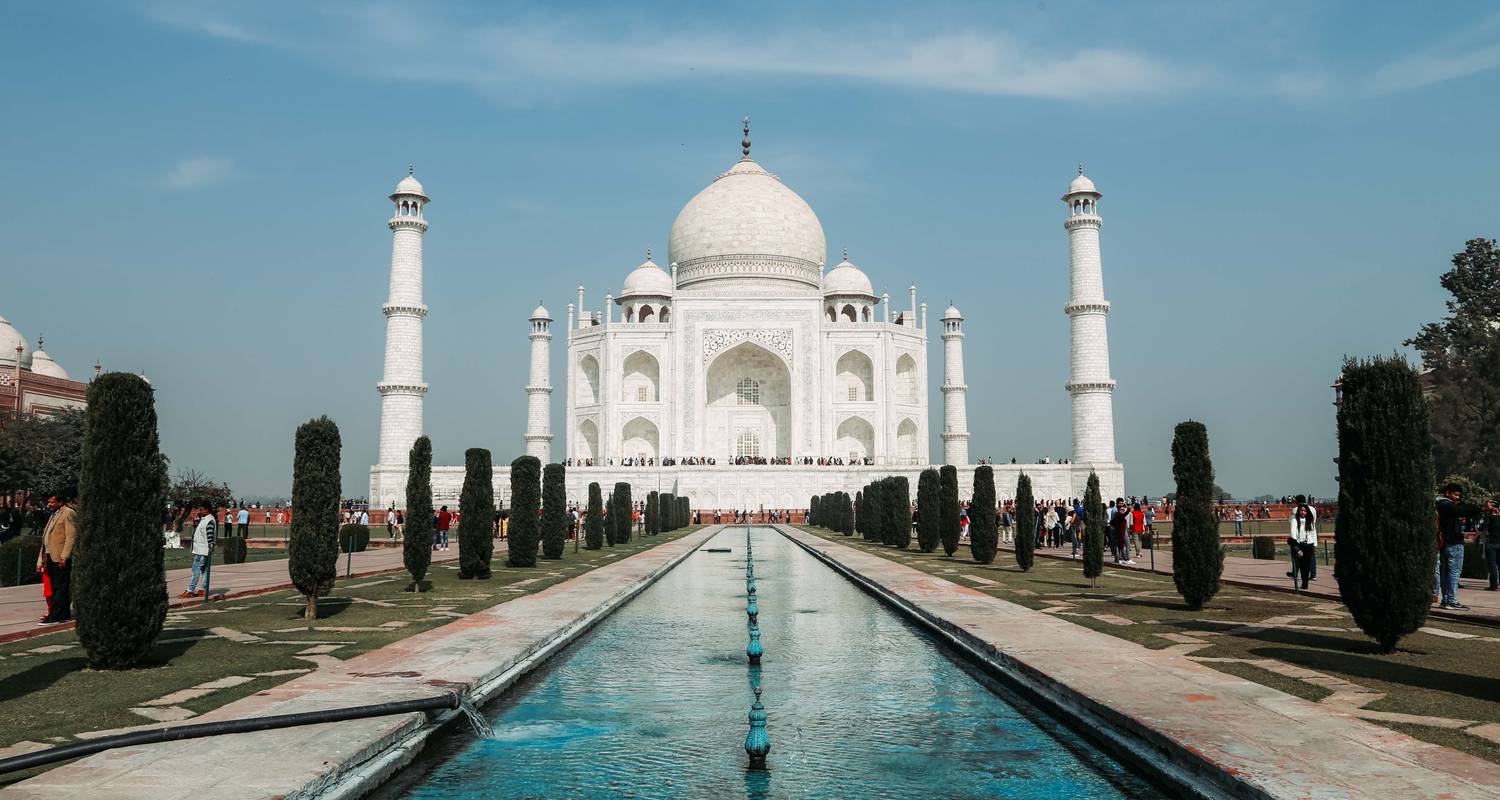
Golden Triangle
Classic Golden Triangle | Delhi, Agra & Jaipur
NotIncluded
INR 37705 Per Person
3-4-5 stars
Travel Duration
5 Days / 4 Nights
Included in the trip
Individual departures
All Round The Year
Experience the heart of India on this classic 6-day journey with My Tour Advisor, exploring Delhi, Agra and Jaipur—the trio of cities that define the Golden Triangle. Seamlessly designed, this tour immerses you in culture, architecture and royal legacy from the past to the present.
Begin in Delhi, a city of vivid contrasts. In Old Delhi walk through the narrow lanes of Chandni Chowk and visit Jama Masjid’s majestic courtyard. Then move to New Delhi’s grand boulevards, India Gate, colonial mansions and the serene Humayun’s Tomb, offering a journey through centuries of Indian history. Travel on to Agra, where the world-renowned Taj Mahal awaits. At dawn, watch its ivory marble glow as the sun rises. Explore the formidable Agra Fort, and delve into the delicate beauty of the Baby Taj, each monument echoing the romance and power of the Mughal era. Next up is Jaipur, the vibrant “Pink City”. Lead the way through Amber Fort’s impressive ramparts, wander the elegant courtyards of City Palace, and marvel at the intricate architecture of Jantar Mantar. Shopping and strolling through Jaipur’s colourful bazaars fills your senses with textiles, jewellery and rich heritage.
Throughout this journey, My Tour Advisor manages every detail—hand-picked accommodations, private transport, expert local guides and authentic experiences that go beyond sightseeing. Whether your interest lies in history, photography, culture or relaxed luxury, this Golden Triangle tour delivers India’s essence in one unforgettable adventure.
Stages Of Tour
Day 1
ARRIVAL IN DELHI & SIGHTSEEING
Welcome to DELHI, The Capital of India. Your flight would land at Indira Gandhi International Airport. After landing kindly head towards the immigration department and get your passport stamped. Immigration Department would stamp the Visa on your Passport. After the Immigration and Custom check Kindly Take an Exit from the Airport from Exit Gate No 4. My Tour Advisor’s Representative would be waiting you for your welcome outside the Gate. After the Meet Proceed towards the visit of the capital of India.
Delhi, India’s captivating capital, is not just a city, it’s a journey through time. From the legendary Indraprastha of the Mahabharata to the grandeur of the Mughals and the elegance of British colonial rule, Delhi has been the stage where history was written. Here, ancient bazaars buzz with spices and silks, while majestic monuments whisper tales of empires long gone. Yet, beyond its history, Delhi is alive with vibrant traditions, mouthwatering street food, colourful festivals, and a cosmopolitan spirit. It is a city where every corner offers a discovery—whether it’s a rickshaw ride through the chaotic lanes of
Chandni Chowk or a stroll past Lutyens’ stately avenues. For travellers, Delhi is not just a destination, but the perfect gateway to experience the soul of India.
Full Day Dedicated to the exploration of the city. The day would start from the visit of Chandani chowk and Jama Masjid, one of the largest and most impressive mosques in India. Built by Mughal Emperor Shah Jahan in the 17th century, this architectural marvel features grand red sandstone courtyards, intricate marble inlay, and towering minarets that offer panoramic views of the city. The mosque’s serene atmosphere provides a striking contrast to the bustling streets outside. From here, dive into the vibrant chaos of Chandni Chowk, Delhi’s oldest and busiest market. Enjoy a ride on cycle rickshaw passing centuries-old shops, taste famous street food and explore treasures ranging from spices and textiles to silver jewellery. Explore the famous spice market Khari Baowli - Asia’s largest spice market.
Afterwards drive through the Lutyens Delhi. designed by British architect Sir Edwin Lutyens, is the heart of India’s capital. It features wide boulevards, grand gardens, and iconic landmarks like President house, India Gate, and Parliament House.
End your day with the visit of Humayun’s Tomb, a UNESCO World Heritage Site, it is a splendid example of Mughal architecture and the first garden tomb in India. Built in the 16th century by Empress Bega Begum for Emperor Humayun, its grand red sandstone structure with white marble domes later inspired the design of the Taj Mahal. Surrounded by Charbagh-style gardens, intricate arches, and Persian-influenced details, the monument reflects the glory of the Mughal era. After the visit return to the hotel. Overnight stay in Delhi.
Day 2
DELHI – JAIPUR (260 KM – 5 HOURS)
After breakfast. Start your drive towards JAIPUR, also called as the pink city. It will take you 5 to 6 Hours to reach Jaipur. On arrival you would be taken to your hotel for check-in.
In the afternoon Visit the Famous Shrine of Galta Ji. It is a religious shrine located at the outskirts of the city in the middle of the Hills. It was the meditating place for the Rishi Galav. The shrine has a religious Pond which is feed by natural spring water. Devotees come to GALTA ji to take a holy dip in the pond and pay homage to the Rishi Galav. Now the Temple is more famous for the Monkeys who have found this place a natural habitat, hence the place has Acquired the name as Monkey Temple.
Afterwards Proceed towards Birla Temple. Built in white marble, Birla Mandir is located in the centre of the city and dedicated to Lord VISHNU and Goddess Laxmi. It is one of the important hindu temple of the Jaipur. After the Visit Return to the Hotel for your overnight Stay.
Day 3
JAIPUR SIGHTSEEING
Jaipur as a city came in to existence in the year 1727 when current Maharaja Jai Singh decided to build a new city to accommodate the rising population of the city. He envisioned a planned city, drawing on scientific and architectural principles of the time, making it one of India's first planned cities. The city's layout, based on Vastu Shastra and Shilpa Shastra, features a grid-iron plan with nine sectors. Jaipur's historical walled city was completed within four years, showcasing a blend of ancient and contemporary architectural styles.
After breakfast, drive towards Amber Fort with a photo stop at Hawa mahal (wind Palace). The fort is perched atop a hill. You can choose to reach up to the top of the hill on an elephant (on direct payment) or in jeep. The fort is famous for its stunning red sandstone and marble structures which includes various courtyards, buildings and pavilions. The most famous structures are Ganesh Pol – the Main entrance gate. The Sheesh Mahal (Mirror Palace) and royal chambers.
After the visit take a photo stop at Jal mahal – the lake Palace of Jaipur
After wards Visit the City Palace Jaipur, located in the heart of the Pink City, the complex includes courtyards, gardens, and several buildings. Its museum has a vast collection of royal costumes, artifacts, textiles & antique furniture.
Later proceed to visit the Jantar Mantar Observatory, it's one of the most well-preserved and largest astronomical observatories in the world. It includes sophisticated tools for the calculation of eclipses and for the detection of the position of stars, the calculation of ascendants. The principal attraction of the building is 27-meter-high sundial which is located in the center of the observatory.
After the visit explore the old city and its vibrant market. After the foundation of the city Jaipur attracted skilled artisans, craftsmen, and merchants from various parts of India to settle here. This led to a flourishing arts and crafts industry, with skilled craftsmen specializing in gem cutting, jewellery making, block printing, Textiles, and miniature paintings. Today Jaipur has become a paradise for shoppers.
later return to the hotel for dinner. Overnight stay in Jaipur.
Day 4
JAIPUR – ABHANERI - FATEHPUR SIKRI – AGRA (230 KM – 5 Hrs Approx)
After a sumptuous breakfast, Start your drive towards Agra, Along the way take a stop at Abhaneri Step Well - Also called as Chand Baori, It is one of the most remarkable stepwells in India and a fine example of ancient engineering and architecture. Built in the 9th century by King Chand of the Nikumbh dynasty, this massive structure was designed to conserve water in the arid desert climate. The stepwell descends about 20 meters and features over 3,500 narrow steps arranged in a symmetrical, crisscross pattern across 13 levels, creating a striking geometric design. Its clever construction ensured that the water remained cool, making it a vital source for drinking, irrigation, and community needs.
After the Visit Proceed towards Fatehpur Sikri, located about 40 kilometers west of Agra, It is a UNESCO World Heritage Site and one of the finest examples of Mughal architecture in India. Built in the late 16th century by Emperor Akbar the Great, it served as the capital of the Mughal Empire for a brief period from 1571 to 1585. Akbar constructed this magnificent city to honor the Sufi saint Sheikh Salim Chishti, who had blessed him with the prophecy of a male heir. The city is a blend of Islamic, Hindu, and Persian architectural styles, showcasing Akbar’s vision of a unified empire.
After the visit proceed towards Agra, On arrival in agra transfer to the Hotel for check-in. Overnight stay in Agra.
Day 5
AGRA SIGHTSEEING & DEPARTURE
Agra is a city steeped in history, heritage, and architectural splendor. Best known as the home of the Taj Mahal, one of the Seven Wonders of the World, Agra draws millions of visitors from across the globe. Once the capital of the Mughal Empire, the city showcases stunning examples of Mughal architecture, including the majestic Agra Fort and Baby Taj. Beyond its monuments, Agra offers a rich cultural experience with bustling markets, traditional crafts like marble inlay work, and flavorful Mughlai cuisine. Agra is not just a destination—it is an unforgettable journey through time, beauty, and imperial legacy.
After Breakfast proceed towards the visit of Tajmahal- built by Emperor Shahjahan for his beloved wife Mumtaz Mahal. Taj Mahal is not just a monument—it's a timeless poem in white marble, a symbol of undying love etched into history. Skilled craftsmen from Persia, Turkey, France and Italy and some 20,000 laborers worked for 17 years to build this edifice. Marble was brought from Makrana near Jodhpur and precious stones of onyx, amethyst, malachite, lapis lazuli, turquoise, jade, crystal and mother of pearl were carried from Persia, Russia, Afghanistan, Tibet and China. It is, truly, love immortalized in stone. After the visit return to the hotel for breakfast
Later proceed towards the Agra Fort. It is a majestic red sandstone fortress located on the banks of the Yamuna River in Agra. Built primarily by Emperor Akbar in the 16th century and later expanded by his successors, the fort served as the main residence of the Mughal emperors. Enclosed within massive walls are a series of elegant palaces, audience halls, and mosques, including the Jahangiri Mahal, Diwan-i-Khas, and Moti Masjid. A fine example of Mughal architecture, blending Islamic and Hindu elements, Agra Fort offers a glimpse into royal life and India's rich historical legacy.
End your day with a visit to Mehtab Bagh, meaning “Moonlight Garden,” It is a Charbagh-style garden complex located across the Yamuna River, directly opposite the Taj Mahal. Built by Emperor Babur in the 16th century, it was later restored by Shah Jahan to serve as the perfect viewing point for the Taj. The beautifully aligned garden offers a serene atmosphere, with fountains, pavilions, and walkways designed to frame the monument’s reflection in the river. Best visited at sunset, Mehtab Bagh provides a breathtaking perspective of the Taj Mahal away from the crowds, making it a photographer’s paradise and a peaceful retreat.
After the visit proceed towards Delhi Airport to catch your International Flight.
END OF THE SERVICES
The hotels
My Tour Advisor Provides a wide variety of hotels
Cost Per Person For Different Categories
| # | No of Pax | Standard | Superior | Prestige |
|---|---|---|---|---|
| 1 | 2 Pax | INR 37705 | INR45643 | INR55566 |
| 2 | 4 Pax | INR33934 | INR41000 | INR49999 |
| 3 | 6 Pax | INR31999 | INR38796 | INR47231 |
| 4 | 8 Pax | INR29999 | INR36514 | INR44452 |
| 5 | 10 Pax | INR27999 | INR33999 | INR41674 |
Supplements
| # | Plan | Standard | Superior | Prestige |
|---|---|---|---|---|
| 1 | Single Supplement | INR22623 | INR26999 | INR32999 |
| 2 | Half Board | INR1600 | INR3200 | INR4800 |
| 3 | Full Board | INR3200 | INR6400 | INR9600 |
| 4 | Christmas Supplement | INR9400 | INR11400 | INR9600 |
| # | Months | Dates 1 | Dates 2 |
|---|
Inclusions
- Accommodation as per Itinerary on twin sharing with Bed and Breakfast Plan.
- Transport by private Air conditioned vehicle as per program.
- Professional English-Speaking Guide.
- Monument Entrance fees as per the Program.
- Rickshaw Ride in Old Delhi
- Visit of Abhaneri Step well - An 8th Century Architetural Marvel
- Hotel/port pickup and drop-off.
- 2 bottles of water per traveler per day
- Travel kit document bag
- One souvenir gift from MY TOUR ADVISOR
- All taxes, fees and handling charges
- GST (Goods and Services Tax)
Exclusions
- International Flights
- Visa and Insurances
- Food and drinks, unless specified.
- Gratuities (recommended).
- Anything not mentioned and specified in Itinerary and in inclusions.
HIGHLIGHTS
In accordance to the COVID 19 pandemic all our tours are operated with all precautionary measures including SANITIZED CARS/COMPLIMENTARY SANITIZERS/MASKS (Your safety is our priority)
- All Inclusive Tour : Hotels / Transport / Guides
- Explore the alleys of Old Delhi in a Rickshaw Ride
- Amer fort at Jaipur
- Charm of the Pink City of Jaipur
- Tajmahal - One of the seven wonders of the world
- Ghost walled fort of Fatehpur Sikri
- Abhaneri Step well - An 8th Century Architectural Marvel
- Yoga at Rishikesh, on the bank of river Ganga
- Arti ceremony at Haridwar
Enquiry Form
Please fill the below form for more information
STATE ORDER
India is a Constitutional Republic made up of 28 sovereign states, 8 Union Territories plus the district of Delhi. Its Constitution entered into force on January 26, 1950. The highest office of the Union is the President of the Republic. The Union of States
Independently headed by the State Assemblies, The Central Parliament is headed by two chambers: the lower house Lok Sabha, the people's chamber, and the upper house, Rajya Sabha, the council of states. The Lok Sabha has 545 members and elections are held every 5 years. The Rajya Sabha is made up of 250 members elected every 2 years, and 125 members elected every 6. Each individual state has its own independent government, a State Head and a Chief Minister, and elects its representatives in the Delhi Parliament. The Indian states are divided into districts and in the villages the administrative system is still oriented towards the traditional method of panchayat run by the five leaders of the community.
CAPITAL
The capital of India is New Delhi, formerly the capital of the British Raj since 1911, an ancient city of art and home to all the embassies in the world.
THE FLAG OF INDIA
The Indian national flag is made up of three horizontal stripes: orange at the top, white at the center and green at the bottom. In the central strip is inserted the wheel of the chariot of Ashoka, the greatest Indian emperor who lived in the third century BC.
Population
The population of India amounts to about 1 billion and 250 million people. Population density: 300 inhabitants per sq. Km.
Language
India has 23 official languages. Hindi is mainly spoken in the northern regions. In the southern states the local languages are spoken. English is spoken in all metropolises and large cities.
Religion
India is the cradle of Eastern religions. The most widespread religions are Hinduism (80%), Islam (12%), Buddhism, Sikhism, Jainism and Catholicism.
Documents for expatriation
Passport: required, with residual validity of at least six (6) months upon arrival. Entry visa: required. Since last April 2017, the Indian government has extended the possibility to obtain an online visa (E-Visa) for trips of less than 60 days. The E-Visa must be requested online directly by the customer and paid for by credit card. The cost is about 50 Dollars, the payment is to be made online by credit card. Before proceeding with the online application for the E-Visa it is necessary to verify that you are in possession of: -
PASSPORT valid for at least six (6) months from the date of arrival in India, with at least 3 blank pages. - COLOR SCAN OF A 5cm x 5cm size PHOTO CARD, frontal and with white background (jpeg format, minimum 10 KB maximum 1 MB). - COLOR SCAN OF THE PASSPORT PAGE containing personal data (pdf format, minimum 10 KB maximum 300 KB). To apply for the E-Visa you need to connect to the site
https://indianvisaonline.gov.in/evisa/registration, click on the “E-Visa Application” box and proceed with completing the online form in its entirety. At the end of the compilation, the payment of 50 USD will be required and the upload of the two scans (passport photo and passport). The visa in electronic format will be sent within 72 hours to the e-mail address you indicated when completing the form, it must be printed, brought with you to the airport together with the passport and kept for the entire duration of the trip. The E-Visa can be requested: - from 30 days from the date of departure of the trip and is valid for a period of stay of up to 60 days from the date of arrival in India. – and can be asked only twice a year. – also valid only if you enter India from one of the following airports: Ahmedabad, Amritsar, Bagdogra, Bengalore, Calicut, Chennai, Chandigarh, Cochin, Coimbatore, Delhi, Gaya, Goa, Guwahati, Hyderabad, Jaipur, Kolkata, Lucknow, Mangalore, Mumbai, Nagpur, Pune, Tiruchirapalli, Trivandrum, Varanasi, Cochin, Goa and Mangalore.
Health Provisions
No vaccination is required in India. However, we recommend that you consult your doctor and your Municipality's Health Office. It is always necessary to follow some preventive indications and to maintain proper personal hygiene. The first advice is not to drink water if not bottled, even better if it is added with carbon dioxide (always making sure that the cap is closed) and avoid consuming raw vegetables and unpeeled fruit.
Air Transport and airports
Intercontinental flights are operated with numerous IATA carriers. The international airport in New Delhi, the Indira Gandhi International airport, is about 20 Km (45 minutes) from the city center and is connected by a taxi and bus service. Mumbai International Airport is 15 km from the city and can be reached in approximately 1 hour, which extends during peak hours. Domestic flights in India may be subject to delays or variations due to adverse weather conditions or other causes. The Internal Air Trafiic is handled by national and private companies covering the whole national territory. Airline tickets for any domestic flights scheduled for your tour will be delivered by our correspondent upon arrival in India.
Airport Taxes
There are currently no airport taxes to be paid out of India with the exception of Bangalore airport (1100 rupees). The legislation in India is subject to sudden changes.
Currency Import regulations:
1. Local currency (Indian Rupee-INR): up to max. INR 25,000.-.
a. not allowed for nationals of Bangladesh or Pakistan residing outside India;
b. if arriving from Bhutan or Nepal, only currency notes in denominations of max. INR 100, - are allowed.
2. Foreign Currencies: unlimited. However, amounts exceeding USD 5,000. - (or equivalent) in cash, or USD 10,000.- (or equivalent) in traveler's cheques must be declared.
Foreign currencies include currency notes, traveler's cheques, cheques, drafts etc. (Re)exchange only through banks and authorized money exchange points.
Customs regulations
The entry of foreign currency is unlimited. All valuables and high-tech items must be declared at the entrance, withholding the receipt. It is allowed to import 200 cigarettes, 25 cigars, 2 liters of alcoholic beverages, 4 perfume bottles for personal use. There are some restrictions on the export of antiques.
Baggage
See international standards.
Indian Currency
The official monetary unit in India is the Indian Rupee (INR), divided into 100 Paisa. There are banknotes of 5, 10, 20, 50, 100, 500, 1000, 2000 Rupees and coins of 1, 2 and 5, 10, 20 Rupees. The most easily convertible currency is the USD but the Euros is also normally accepted. It is advisable to exchange money at hotels that charge a fee or at banks and exchange offices in major Indian cities. Credit cards are accepted in shops, hotels and major tourist centers. 1 Euro = 75 Indian Rupees 1 US Dollar = 67 Indian Rupees NB: The above exchange rates are to be considered indicative.
Time zonetime
Official Timezone of India is +530. Indian Standard time is the time zone observed throughout India, with a time offset of UTC+05:30. India does not observe daylight saving time or other seasonal adjustments.
Climate
Given the vastness of the territory, India has all types of climate. Monsoon period (from July to August): hot-humid climate with abundant rain, at various times of the day, and humidity around 90%. Temperatures range from 30-32 degrees during the day to 20-22 degrees at night. Autumn-winter period (from September to April): warm dry climate generally sunny, without particularly intense rains, with temperatures ranging between 22-26 degrees during the day and 14-16 degrees at night. This is the best time to visit India. Tropical hot period (May to June): hot dry climate with temperatures hovering around 40 degrees during the day. To visit the Himalayan regions of Ladakh, Kashmir and Sikkim, the ideal period is from April to September, with dry weather and sporadic nighttime rainfall. During these months the temperatures in the Himalayas, even at altitudes above 3000 meters, are pleasant: 18-22 degrees during the day and 8-12 degrees at night. Above 4000 meters, night temperatures around zero are recorded.
Clothing
The choice of clothing must generally respond to criteria of practicality, comfort, compliance with the climate and the environment. It is therefore advisable to opt for very comfortable sports clothing and footwear, excluding garments in synthetic fibers that prevent body transpiration, especially in hot climates. Personal equipment recommended for the trip We provide below an indicative list of material to undertake the trip, which everyone must adapt to their habits and needs. - Sun hat, scarf - long sleeve cotton dresses and shirts - t-shirt type t-shirts - long cotton canvas pants, jeans - short shorts (not above the knee for women) - Wool sweater or sweatshirt for evening - waterproof or light waxed cape - Cotton underwear - a pair of comfortable sneakers - a pair of sandals - light windproof jacket - handkerchiefs and refreshing wipes - moisturizer - sunscreen with high protection factor - Cocoa Butter for Lips - insect repellent - sunglasses - multipurpose knife - electric socket with universal connection - backpack for daily needs
Personal pharmacy
In addition to any medicines for personal use, it is advisable to bring basic medicines with you such as: antibiotics (a broad spectrum and one specific for the pulmonary tract), diuretics, antinevralgics, antidiarrheals (Imodium), intestinal disinfectants (Bimixin, Normix), dietary supplements intestinal (Enterogermina), aspirins, antipyretics, eye drops, insect repellent, water disinfectant, plasters, gauze and bandages for small wounds, penicillin-based ointment, antihistamine ointment. We also recommend the use of saline supplements to avoid dehydration of the body, very fast in these environmental conditions.
Offices
Banks are open from 10.00 to 14.00 from Monday to Saturday. The shops are open from 10.30 to 20.00 from Monday to Saturday.
Electricity
It is preferable to have a universal type adapter. Electricity runs at 220 volts and has standard sockets in almost all hotels. The plugs with the ground socket (center pin) do not work.
Telephone
To make an International call by a Fix line or Mobile you must add International Country Code, followed by the prefix of the city with the leading zero and finally the number of the subscriber. In all Indian cities there are public telephones (called STD and ISD) with operator, counting and payment in cash. Telephone cards for public telephones are not used. A minute of conversation from India to Europe could costs around 20 rupees (less than 1 euro). Calling from hotels can cost up to 4 or 5 times more. To call from Italy to India you must select 0091 followed by the city code (New Delhi 11, Mumbai 22, Kolkata 33) and dial the subscriber number. Mobile phones: throughout the country, mobile phones work regularly. Coverage is not complete in desert regions and the more remote Himalayan valleys.
Hotel accommodation
In India, the official category of hotels does not guarantee international standards and does not always guarantee customer expectations. All facilities, from luxury hotels to heritage residences (former homes of the Maharajas), are periodically supervised by our staff. Heritage hotels (3/4/5 stars) guarantee a comfortable standard and a traditional atmosphere able to immerse visitors in the time of the Maharajas. In the main cities, where the accommodation offer is wider, hotels have been selected that guarantee an accurate service, a welcoming environment and a privileged location. In the Himalayan areas and along the off-road itineraries, the best existing structures (3 stars) and fixed tented camps with limited comfort are provided, where a good spirit of adaptation is required.
Means of transport
The roads connecting the major cities of India are generally paved. The means of transport are private and of Indian standard, with air conditioning and highly experienced English speaking drivers. The traffic of the Cities considerably slow down the transfer times allowing an average of about 50 km per hour. For travelers who wish it is possible to provide vehicles of superior category.
Food and Drink
Indian cuisine is very rich and tasty. Each state has its own culinary traditions and is distinguished by its elaborate preparations. Spices (Masala) are used with almost all foods. In general, Indians are very fond of vegetables, rice, lentils, yogurt, tropical fruit, vegetables but also chicken, mutton and lamb. Beef and pork are excluded from the table for religious reasons. Excellent chapati, roti and paratha bread which is prepared in different ways depending on the region. Curry, cumin, coriander, black pepper, nutmeg, ginger, cinnamon, cloves, anise, cardamom are present in many vegetarian or meat or fish dishes; often the dishes are associated with "daal" (lentils) with white yogurt. In general, the cuisine is spicy even if the hotels that host Western travelers try to "limit" the use of spices. Do not miss the Tandoori chicken (typically Indian chicken), fruit (coconuts, mangoes, papaya, bananas) and of course the "chai": tea with milk and spices. The Indians produce excellent beer and different qualities of rum.
Holidays
Magha- January / February 26 January: Indian Republic Day Makar Sankranti, Hindu festival Mahashivaratri, Shiva, Kumbh Mela festival (rotating): - Haridwar 2021 (Uttaranchal) - Allahabad 2024 (Uttar Pradesh) - Nasik 2027 (Maharashtra) - Ujjain 2030 (Madhya Pradesh), Phalguna - February / March Holi, festival of colors Thar Desert Festival (Rajasthan) Chaitra - March / April Hanuman Jayanti, birth of Hanuman Ramnavami, birth of Rama Pooram, Thrissur (Kerala) Vaishaka - April / May Buddha Purnima, birth of Buddha Jyaistha - May / June Id-E-MÌIad, birth of Mohammed Asadha - June / July Rath Yatra, festival of chariots, Puri (Orissa) Hemis, Buddhist festival (Ladakh) Sravana - July / August Lamayuru , Buddhist festival (Ladakh) Phyang, Buddhist festival (Ladakh) Janmashthami, birth of Krishna Bhadra - August / September Ganesh Chaturthi, birth of Ganesh (Mumbai and Pune) August 15: Independence Day Nerhu Trophy, Aleppey (Kerala) Ashwin - September/ October Dusserha, Hindu festival, Mysore (Karnataka) Gandhi Jayanti, birth of Mahatma Gandhi Navratri, Hindu festival Kartika - October / November Diwali, festival of lights Pushkar Festival (Rajasthan) Guru Nanak Jayanti, Sikh Aghan festival - November / December Ramadan, Muslim festival Break - December / January Dance and Music Festival, Chennai International Film Festival, Trivandrum
Photographic material
It is advisable to obtain all the necessary material in advance: films, micro-Films, flashes, memory cards are not always easily available or very expensive. It will be useful to carry a simple plastic bag with you to protect objects from dust or humidity.
Shopping
In India it is possible to buy many handicrafts and each state has its own particular local art. From carpets to precious stones, from silk fabrics to silver objects, from spices to multiple objects inlaid in wood or marble, from pashmina shawls to bedspreads embroidered with gold thread and mirrors. Traveling with local guides or Indian escorts you will have many opportunities to shop. At the end of the planned visits, it is customary for the guides and companions to recommend some shops where to shop and where the objects offered are of authentic value. Sometimes the local guides can be too insistent in taking you to the shops they know: in these cases, you do not feel obliged to go but if you follow their advice do not doubt the quality of the goods that are offered to you. Treat your prices with tenacity: it is the local custom. In any case, by going to the shops on your own, unless you have very precise indications, you would most likely stumble into "little scams": do not delude yourself otherwise!
Tipping
In India it is good practice to leave service tips in hotels, restaurants, guides and drivers following your journey. For a tip for normal room service or porterage we recommend 50-100 Rupees. For the one-day service of a local guide (as long as you are satisfied) we recommend around 10 dollars. Same treatment for a
Our Staff
Our guides and professional escorts have experience in the area and in-depth cultural preparation. We can provide Guides in differenr languages also in most of the sectors but in some areas there shall be only english speaking Guides available, Such as Ladakh and the Himalayan areas, Kindly do check it with our travel experts regarding the availabiluty.
Means of transport
Our organization boasts a large fleet of new generation air-conditioned means of transport: from standard or deluxe cars (2/3 pax) to Overland vehicles (2/3 pax); from minibuses (4/8 pax) to grand tour buses (10/40 pax), with professional English speaking drivers, always attentive to the needs of travelers. The roads that connect the main cities of India are generally good. Indian Traffic conditions limit the transfer times to an average of 50 km per hour.
Hotels and tented camps
In Indian Subcontinent, the official category of hotels does not guarantee international standards and does not always correspond to the expectations of the traveler. The structures that MTA chooses, from luxury hotels, to Heritage Hotels (former residences of the Maharajas), to lower category hotels, are periodically supervised by our staff. In the Himalayan areas of Ladakh, hotels are provided among the best existing and standard tented camps with limited comfort, where a good spirit of adaptation is required.
Flights
The Major airports where International flights Land are Delhi, Mumbai, Chennai, Kolkata, Bangalore, Hyderabad, Almost all of the major International Airliens have theor scheduled flights from these cities. including Swiss, Emirates, Qatar Airways, Turkish Airlines, BrusselsAirlines and Etihad.
Personalized trips
Our Product Managers are available to travelers to develop personalized itineraries (for individuals or groups) and offer ad hoc programming, designed with maximum flexibility and with smallest details, for those who want to immerse themselves in the magic and spirituality of " Land of the Gods” outside the classic Itineraries or with programs already present in the catalog. MTA is also available to develop personalized travels in cinema, nature, sports, honeymoons, incentive travel, business tourism and medical tourism in India.
India Visa
To obtain an entry visa to India it is essential to have a passport valid for 6 months from the date of travel (with at least three consecutive free pages), and two passport photos. you can apply for ETA (Electronic Travel Authorization) The Link of the website is https://indianvisaonline.gov.in/evisa/tvoa Kindly check for permission Granted on ETA before boarding your flight.
